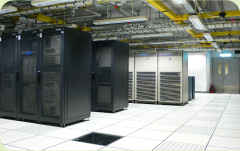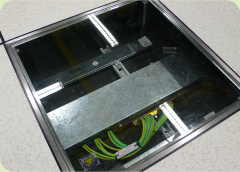Our diverse activities, ranging from gas production to customer services, hand-in-hand with other supporting activities, require the consumption of considerable amounts of water and electricity and thus the indirect emission of greenhouse gases. Ongoing research and the implementation of appropriate measures to reduce energy usage and conserve water have therefore always been priorities in our environmental protection agenda.
Electricity
In 2007, we carried out a series of energy-efficient measures in our gas production process achieving an electrical saving of 3,942,356kWh, the equivalent of 2,759 metric tonnes of carbon dioxide emissions. We also continue to implement energy-efficient measures, which include the shutting down of some of the naphtha feed pumps and benfield plants, depending on the production volumes and maintenance schedules of the gas production units; the use of variable frequency drives in over 30 pump, compressor and fan motors; insulation condition surveys; diesel-driven emergency pumps for naphtha feeds; the heating of natural gas with cooling water at our Tai Po plant; as well as the use of photovoltaic panels at most of our off-take and pigging stations, etc. In the office, indoor temperatures are set at 25°C and the data centre at our headquarters in North Point has also been renovated to include several energy-efficient measures, which have yielded satisfactory savings in electricity.| Facilities/Premises | Electricity Saved in 2007 (kWh) | CO2 Emission Equivalent Avoided in 2007 (Metric tonnes) |
| Tai Po plant | 3,856,156 | 2,699 |
| Off-take and pigging stations | 86,200 | 60 |
| Headquarters | 3,737,070 | 2,616 |
We also encourage our JVs on the mainland to implement energy-efficient measures. Our Xuzhou JV, for example, adopted a variable frequency drive for its compressors, resulting in a saving of RMB 180,000 in its stations as compared to 2006.

Green Data Centre – from commitment to action
In view of our growing and diversifying businesses, a reliable, efficient, effective and high availability Data Centre is essential to our success. Since IT equipment requires stable power supply and enormous cooling facilities in data centre, we have introduced several innovative “green” elements to improve the design of the Centre at our headquarters in North Point.This “Green Data Centre” came into operation in early 2007. It makes use of modern thermal and state-of-the-art smart cooling facilities with the installation of an energy efficient air conditioning system with intelligent controls, which improves overall cooling efficiencies. A new and structured cabling design also separates data and power cables. The former is laid above the ceiling and the latter below the raised floor, improving airflow and reducing the electricity needed to cool the system.
More electricity was also saved with the “Lights-Out” operations model used within the Centre. These “green” initiatives translated into a saving of 164.5 metric tonnes in CO2 emissions, in terms of 235,000 kWh of electricity saved, during the year. Extending this “greening” process, we are also replacing IT machines and storage facilities with alternatives that consume less electricity and emit less heat in operation.
These “green” initiatives have not only improved the overall energy efficiency, lowering operation costs, they have also resolved powering and cooling problems when upgrading IT equipment. The “Green Data Centre” is a successful example of our sustainable development in action.




























